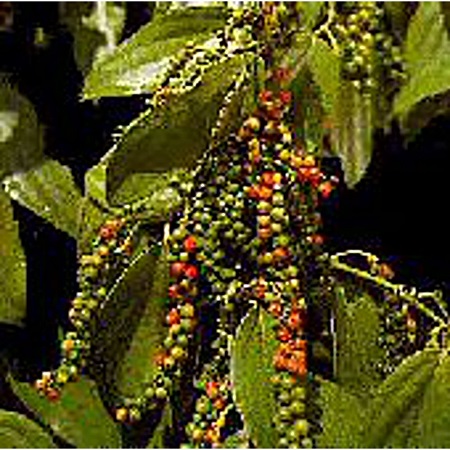
A peppercorn plant is a tropical vine that is native to India and Southeast Asia. It is also known as the black pepper plant, and its scientific name is Piper nigrum. The peppercorn plant produces the popular spice called black pepper, which is made by drying the unripe berries of the plant.
The peppercorn plant grows in hot and humid climates and requires a lot of water and sunshine to thrive. The plant can grow up to 33 feet tall, but it is usually pruned to around 13 feet to make it easier to harvest the berries.
Peppercorns have been used as a spice for thousands of years and were once considered a luxury item. They were even used as a form of currency in some cultures. Today, black pepper is one of the most used spices in the world and is used in a variety of cuisines and dishes, from savory to sweet.
How to Grow Peppercorn Plants in a Greenhouse
Peppercorns are a tropical plant, so if you live in a northern climate, you’ll need to grow them in a greenhouse. Keep in mind that this one is a long-haul plant for patient gardeners who don’t mind waiting up to 4 years to reap the rewards of their efforts.
Growing peppercorn plants in a greenhouse is a great way to provide a warm and humid environment that they need to thrive. Here are some steps to follow for growing peppercorn plants in a greenhouse:
Sunny Location
Select a location inside the greenhouse that gets plenty of sunlight and has good ventilation. Peppercorn plants prefer warm temperatures between 75-85°F, so make sure the greenhouse stays within this temperature range.
Soil Preparation
Use a well-draining potting mix that is rich in organic matter and slightly acidic with a pH between 5.5-7.0. You can add compost or other organic matter to the potting mix to improve its quality. Read this article for information on how to test your soil pH and how to correct it if needed.
Planting
Plant the peppercorn seeds in pots or containers that are at least 8 inches in diameter. Sow the seeds about ¼ to ½ inch deep in the soil. Water the soil well after planting.
Watering
Keep the soil moist but not waterlogged. Peppercorn plants require regular watering, especially during the growing season. Make sure to avoid overwatering as this can lead to root rot.
Fertilizing
Peppercorn plants require regular fertilization to grow properly. Use a balanced fertilizer every 2-3 weeks during the growing season.
Training
Peppercorn plants grow as vines and need support to climb. You can provide a trellis or other support structure for the vines to climb. Make sure to prune the plants regularly to keep them in check.
Pollination
Peppercorn plants require cross-pollination to produce fruit. You can use a small brush to transfer pollen from one flower to another or introduce bees or other pollinators into the greenhouse.
Harvesting
Peppercorns are ready for harvest when they turn from green to red. You can pick them when they are still green for a milder flavor or wait until they turn red for a stronger flavor. Peppercorns can be dried in the sun or a dehydrator.
10 Fun Facts About Peppercorn Plants
Peppercorn plants are native to India and have been cultivated for over 4,000 years.
Peppercorns are the most traded spice in the world and have been used in cooking for thousands of years.
Peppercorn plants are climbing vines that can grow up to 33 feet in height in their natural habitat.
Peppercorn plants produce small flowers that are arranged in dense spikes.
The fruit of the peppercorn plant is a small, round berry that starts out green and turns red when ripe.
Black peppercorns are made by drying the unripe green berries of the plant.
White peppercorns are made by removing the outer layer of the ripe red berries and drying the inner seed.
Pink peppercorns are not actually from the peppercorn plant but are instead derived from a related tree called the Peruvian pepper tree.
Peppercorns contain an essential oil called piperine, which gives them their characteristic spicy flavor.
Peppercorn plants are hardy and can live for up to 20 years in the right conditions.




Comment here